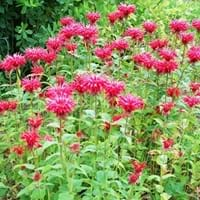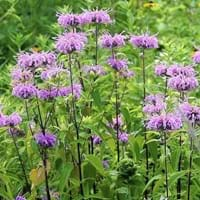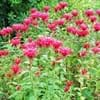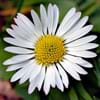Life Span
Perennial
Perennial
Origin
North America, United States, Northeastern United States, Mid-Atlantic United States, Southeastern United States, Central United States, Canada
North America, Northeastern United States, Mid-Atlantic United States, Southeastern United States, North-Central United States, Central United States, South-Central United States, Texas, Canada
Types
Not Available
Monarda fistulosa brevis, Monarda fistulosa fistulosa, Monarda fistulosa mollis
Number of Varieties
Not Available
Habitat
meadows, Wet ground, Woodlands
Thickets, Woodland edges
USDA Hardiness Zone
Not Available
Not Available
Sunset Zone
Not Available
Not Available
Habit
Clump-Forming
Clump-Forming
Flower Color
Not Available
Not Available
Flower Color Modifier
Bicolor
Bicolor
Fruit Color
Not Available
Not Available
Leaf Color in Spring
Not Available
Not Available
Leaf Color in Summer
Not Available
Not Available
Leaf Color in Fall
vvv
Not Available
Leaf Color in Winter
Light Green
Light Green
Leaf Shape
Heart-shaped
Lance shaped
Plant Season
Summer
Spring, Summer
Sunlight
Full Sun, Partial Sun
Full Sun, Partial Sun
Type of Soil
Clay, Loam, Sand
Clay, Loam, Sand
The pH of Soil
Neutral
Acidic, Neutral, Alkaline
Soil Drainage
Average
Average
Bloom Time
Not Available
Not Available
Tolerances
Drought
Drought, Heat Tolerance, Sun
Where to Plant?
Ground
Ground
How to Plant?
Seedlings, Stem Planting
Seedlings
Plant Maintenance
Medium
Medium
Watering Requirements
Form a Soil ring to water efficiently, Requires regular watering, Water when soil is dry
Medium
In Summer
Lots of watering
Lots of watering
In Spring
Moderate
Moderate
In Winter
Average Water
Average Water
Soil pH
Neutral
Acidic, Neutral, Alkaline
Soil Type
Clay, Loam, Sand
Clay, Loam, Sand
Soil Drainage Capacity
Average
Average
Sun Exposure
Full Sun, Partial Sun
Full Sun, Partial Sun
Pruning
Remove damaged leaves, Remove dead branches, Remove dead leaves
Cut or pinch the stems, Remove damaged leaves, Remove dead branches, Remove dead flowers, Remove dead leaves, Remove deadheads
Fertilizers
All-Purpose Liquid Fertilizer
All-Purpose Liquid Fertilizer
Pests and Diseases
Red blotch
Powdery mildew, Rust
Plant Tolerance
Drought
Drought, Heat Tolerance, Sun
Flower Petal Number
Not Available
Not Available
Fragrant Bark/Stem
Yes
Yes
Foliage Texture
Not Available
Not Available
Foliage Sheen
Not Available
Not Available
Attracts
Butterflies, Hummingbirds
Bees, Hummingbirds
Allergy
Skin irritation
Not Available
Aesthetic Uses
Not Used For Aesthetic Purpose
Beautification, Cottage Garden, Showy Purposes
Beauty Benefits
Not Available
Skin inflammation, Skin Problems
Environmental Uses
Air purification
Air purification
Medicinal Uses
Digestive disorders, Fever, Gastritis
Antiseptic, Carminative, Diaphoretic, Diuretic, Gastrointestinal disorders
Part of Plant Used
Leaves
Flowers, Leaves, Stem
Other Uses
Can be made into a herbal tea
Added to salads, Used as a flavouring in food, Used as a potherb, Used as Ornamental plant
Used As Indoor Plant
No
No
Used As Outdoor Plant
Yes
Yes
Garden Design
Cutflower, Herb, Vegetable, Mixed Border, Wildflower
Cutflower, Edible, Mixed Border, Wildflower
Botanical Name
MONARDA didyma
MONARDA fistulosa
Common Name
Scarlet Beebalm,
Red Bergamot
Wild Bergamot, bee balm
In Hindi
Oswego चाय
Wild Bergamot
In German
Oswego Tee
Wilde Bergamotte
In French
Oswego thé
bergamote sauvage
In Spanish
té Oswego
bergamota silvestre
In Greek
Oswego Τσάι
άγρια Περγαμόντο
In Portuguese
Tea Oswego
Bergamota selvagem
In Polish
Oswego herbaty
Dziki Bergamot
In Latin
Oswega Tea
Wild Bergamot
Phylum
Not Available
Magnoliophyta
Class
Not Available
Magnoliopsida
Family
Lamiaceae
Lamiaceae
Clade
Angiosperms, Asterids, Eudicots
Angiosperms, Asterids, Eudicots
Tribe
Not Available
Mentheae
Subfamily
Not Available
Nepetoideae
Importance of Oswego Tea and Wild Bergamot
Want to have the most appropriate plant for your garden? You might want to know the importance of Oswego Tea and Wild Bergamot. Basically, these two plants vary in many aspects. Compare Oswego Tea and Wild Bergamot as they differ in many characteristics such as their life, care, benefits, facts, etc. Every gardener must at least have the slightest clue about the plants he wants to plant in his garden. Compare their benefits, which differ in many ways like facts and uses. The medicinal use of Oswego Tea is Digestive disorders, Fever and Gastritis whereas of Wild Bergamot is Antiseptic, Carminative, Diaphoretic, Diuretic and Gastrointestinal disorders. Oswego Tea has beauty benefits as follows: Not Available while Wild Bergamot has beauty benefits as follows: Not Available.
Compare Facts of Oswego Tea vs Wild Bergamot
How to choose the best garden plant for your garden depending upon its facts? Here garden plant comparison will help you to solve this query. Compare the facts of Oswego Tea vs Wild Bergamot and know which one to choose. As garden plants have benefits and other uses, allergy is also a major drawback of plants for some people. Allergic reactions of Oswego Tea are Skin irritation whereas of Wild Bergamot have Not Available respectively. Having a fruit bearing plant in your garden can be a plus point of your garden. Oswego Tea has showy fruits and Wild Bergamot has showy fruits. Also Oswego Tea is flowering and Wild Bergamot is flowering. You can compare Oswego Tea and Wild Bergamot facts and facts of other plants too.





